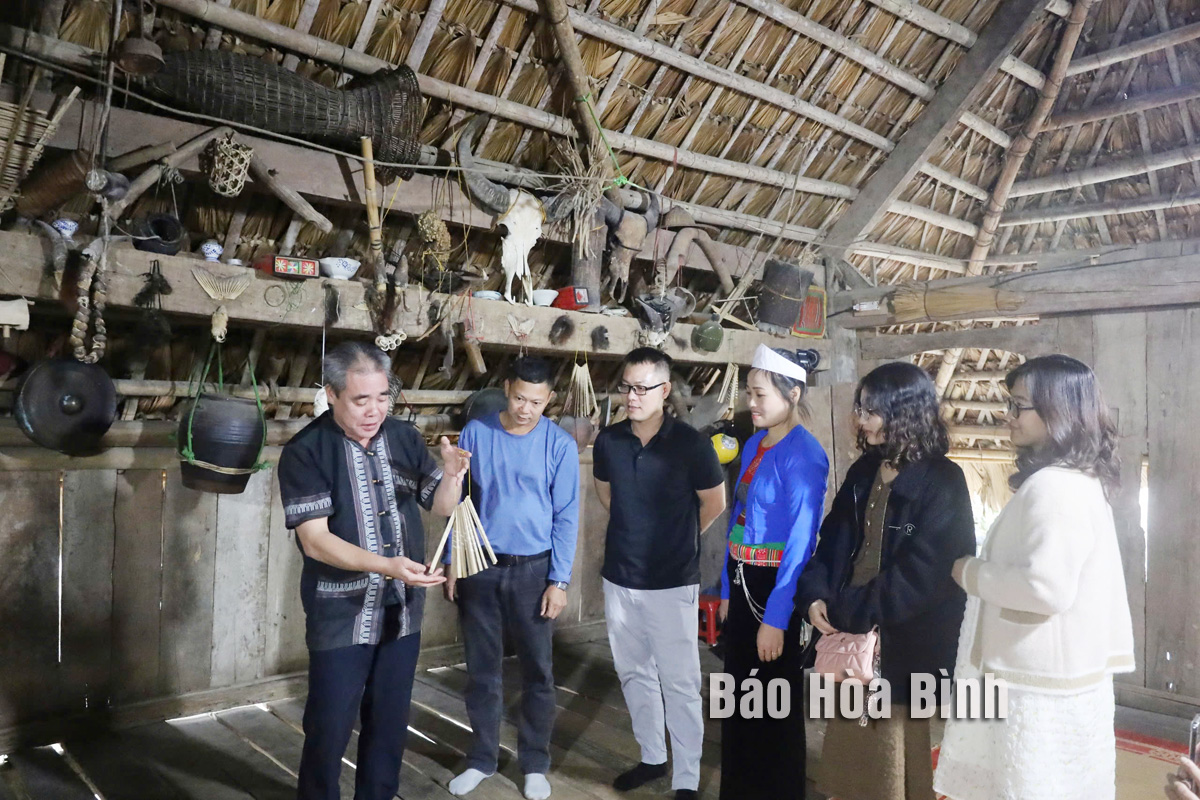
Muong calendar, known as sach doi, is an ancient folk knowledge system developed through observations of the movement of the pleiades star. This unique calendar consists of 12 bamboo sticks, each representing a lunar month. Specific days within each month are marked with distinct symbols, guiding locals in determining auspicious and inauspicious days for important activities.
The bamboo calendar is still preserved and displayed by the Muong community in
Mo hamlet, Binh Thanh commune, Cao Phong district, where locals continue to
apply its wisdom in their daily lives.
According to Muong legend, the Muong Bi calendar dates back to the era of King
Dit Dang, the earliest ruler of the Muong people. It is believed to have first
emerged in Muong Bi, an area historically linked to the early days of the Hung
Kings’ reign.
As one
of Vietnam’s indigenous ethnic groups with a rich history, the Muong people
developed their own sophisticated timekeeping system. The Muong Bi calendar is
remarkably detailed, dividing time into precise units: a day consists of 16
hours (each Muong hour is roughly equivalent to 1.5 Kinh hours), a month spans
29-30 days structured into three weeks of 10 days each, and a year is divided
into 12 months across four quarters.
The
calendar deeply influences both Muong society and daily life. However, its
application is geographically specific - local proverbs such as "ngay lui thang
toi” (days regress, months advance) reflect agricultural traditions unique to
Muong Bi and do not necessarily apply to other Muong regions.
Thanks
to its historical and cultural significance, the Muong bamboo calendar of Hoa
Binh province, alongside the Khai Ha Festival, the Keeng Loong dance of the
Thai people, and the Xen Ban Festival in Mai Chau, has been officially
recognised as National Intangible Cultural Heritage by the Ministry of Culture,
Sports and Tourism.
Beyond
the calendar, the Muong people boast a rich cultural legacy, including the
iconic Muong drums, gongs, script, and traditional villages. These elements not
only preserve the unique identity of the Muong community but also attract
researchers, archaeologists, and folklore enthusiasts, as well as visitors
eager to experience Hoa Binh’s vibrant cultural heritage.
The People's Committee of Lo Son commune, Tan Lac district, has organised the local annual traditional stream fishing festival on April 19 - 20.
As a land deeply intertwined with human history and Vietnam’s millennia-long journey of nation-building and defence, Hoa Binh is often revered for its epic tales and legends.
Residents of Hoa Binh boast a rich cultural identity, reflected in their unique language, traditional attire, customs, and folk melodies – described as "sweet as honey, clear as a mountain stream.”
Lac Son district’s Vu ban town held the 2025 Truong Kha temple festival on April 12–13 (the 15th–16th days of the third lunar month). Since its revival in 2019, the festival has been organised every three years, preserving valuable intangible heritage while meeting the community’s cultural and spiritual needs.
The clothing of women reflects the culture of the Muong, Thai, Tay, Dao, and Mong ethnic groups in the northern province of Hoa Binh.
Gongs hold a special place in the cultural and spiritual life of the Muong ethnic people in Hoa Binh province. More than musical instruments, they are an indispensable part of community rituals and collective memory, echoing through generations as a spiritual thread linking the past, present, and future.



